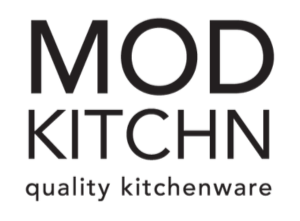
Sustainable Baking: Eco-Friendly Tools and Practices for Your Kitchen
Share
Picture this: you’re baking a batch of your favorite cookies, the comforting aroma filling your kitchen. But this time, you’re not just creating something delicious—you’re also doing your part to help the planet. Each step you take in your baking routine is a little more thoughtful, a little more eco-friendly.
In this article, we’ll dive into simple ways to make your baking more sustainable. From choosing eco-friendly tools to adopting greener practices and tweaking your recipes, you’ll discover how easy and rewarding it can be to create a more eco-conscious kitchen. Let’s bake some goodness for ourselves and for the earth.

Choosing Eco-Friendly Baking Tools
Making your baking routine more sustainable starts with the tools you use. Instead of relying on single-use items like parchment paper and plastic utensils, why not switch to reusable baking mats made from silicone? These mats are not only non-stick and easy to clean but can be used over and over again, saving you money in the long run and cutting down on waste. Imagine never having to buy parchment paper again!
Another great way to green your baking is by choosing sustainable bakeware. Think about investing in items made from durable materials like stainless steel, cast iron, or glass. These materials last much longer than their non-stick counterparts and don’t contain the harmful chemicals often found in non-stick coatings. Plus, using wooden or bamboo utensils is a simple change that makes a big difference. They’re biodegradable, sturdy, and add a charming, natural touch to your kitchen. By picking high-quality, long-lasting tools, you’ll not only reduce waste but also enjoy a more eco-friendly and stylish baking experience.
Finally, consider how you store your delicious homemade bread and baked goods. Reusable bread bags are a fantastic alternative to single-use plastic bags or foil. Made from durable, freezer-safe materials, these bags keep your bread fresh longer and are easy to clean and reuse. They come in various sizes to fit everything from a loaf of sourdough to a batch of cookies. Switching to reusable storage options not only reduces waste but also keeps your kitchen organized and your baked goods fresh. Plus, there’s something quite satisfying about reaching for a beautiful, reusable bag each time you store your creations.

Sustainable Baking Practices
Incorporating sustainable practices into your baking routine can make a big difference. Start by focusing on reducing waste in your kitchen. Instead of tossing out leftover ingredients, get creative with how you use them. Stale bread can become delicious breadcrumbs, French toast, bread pudding or crunchy croutons, and fruit scraps can be transformed into flavorful syrups or jams. These small changes not only help you save money but also make you feel good about contributing to a more sustainable lifestyle.
Another simple way to make your baking greener is to be more energy-efficient. Try using a convection oven, which cooks food faster by circulating hot air evenly, reducing energy use. Also, consider batch baking. By baking multiple items at once, you can make the most of the heat already in use, saving both energy and time. Lastly, look into when is the best time in your area to have your oven running. There may be discounts on utilities or rewards from utility companies for baking during optimal times. These small adjustments can add up to a significant impact on your kitchen's overall energy efficiency.

Recipe Adjustments for Sustainability
Making small tweaks to your baking recipes can go a long way in boosting your sustainability efforts. Start by choosing local and organic ingredients whenever you can. Supporting local farmers not only cuts down on the carbon footprint from transporting goods but also means you get fresher, healthier ingredients. Plus, organic products are grown without harmful pesticides, making them better for the planet and for you. By opting for local and organic, you’re helping to create a more sustainable food system and making your baked goods even more wholesome.
Another great way to make your baking greener is by incorporating more plant-based ingredients. Reducing the use of dairy and eggs can lower your environmental impact and introduce you to some tasty alternatives. For instance, you can use flax or chia seeds mixed with water as an egg substitute, and try almond, soy, or oat milk instead of cow’s milk. These simple swaps can be healthier and just as delicious, giving you new flavors and textures to play with in your baking. By experimenting with plant-based ingredients, you’re not only helping the environment but also adding a fun and creative twist to your favorite recipes.
Bringing It All Together
No need to adopt all these changes at once - that would be overwhelming! Instead, start small by picking one or two tips that resonate with you and incorporate them into your baking routine. Maybe try using a reusable bread bag or experiment with a plant-based recipe. Each little change makes a big difference, and you’ll find it easier to grow your sustainable practices from there. Let’s make delicious treats and a positive impact on the environment, one bake at a time.
We’re excited to support you on your sustainable baking journey! Enjoy 10% off your order with the promo code THANKYOU10.
